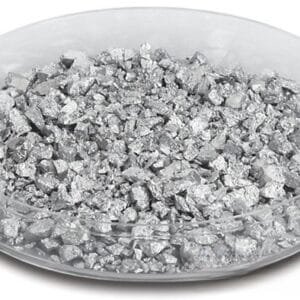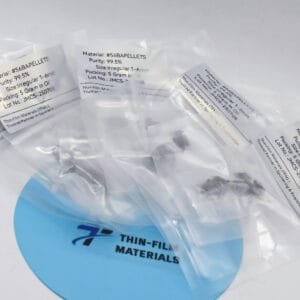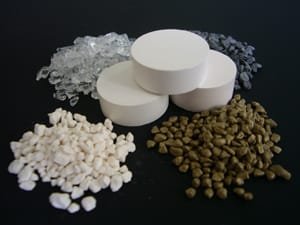| Material Type | Lead Arsenic |
| Symbol | PbAs |
| Melting Point (°C) | |
| Theoretical Density (g/cc) |
| Z Ratio | |
| E-Beam | |
| E-Beam Crucible Liner Material | |
| Temp. (°C) for Given Vap. Press. (Torr) | |
| Comments |
Lead Arsenic Pellet Evaporation Material
TFM provides high-purity Lead Arsenic Pellet Evaporation Material, specifically designed for thin-film deposition in infrared detection, semiconductor research, and optoelectronic applications. Composed of lead (Pb) and arsenic (As), this material exhibits unique electronic and optical properties, making it suitable for infrared sensors, photodetectors, and advanced semiconductor devices.
Engineered for thermal evaporation and electron beam (E-beam) evaporation, Lead Arsenic Pellet Evaporation Material ensures high film uniformity, excellent adhesion, and superior purity, contributing to the development of high-performance thin-film coatings.
Key Features and Advantages
Exceptional Infrared Sensitivity: Ideal for long-wavelength infrared (LWIR) and mid-wavelength infrared (MWIR) detection technologies.
Tunable Electronic Properties: Supports infrared optoelectronics, photonic applications, and semiconductor research.
High Purity & Controlled Stoichiometry: Ensures precise thin-film formation for enhanced device efficiency and stability.
Excellent Film Uniformity & Adhesion: Facilitates reliable deposition processes, reducing defects and film inconsistencies.
Custom Compositions Available: Tailored to meet specific industry and research requirements.
Applications
Infrared Imaging & Thermal Detection: Used in night vision systems, IR cameras, and thermal sensors for security, aerospace, and industrial monitoring.
Optoelectronic & Photonic Devices: Supports photoelectric conversion, infrared communication, and high-resolution imaging applications.
Semiconductor & Quantum Technology: Plays a crucial role in topological insulators, advanced semiconductors, and nanoelectronics.
Thin-Film Coatings for Optical & Electronic Systems: Essential for precision optical coatings and high-sensitivity detection devices.
Industry Impact and Customization
TFM’s Lead Arsenic Pellet Evaporation Material is designed to advance infrared detection, optoelectronic technologies, and semiconductor research. With precise stoichiometry control, customizable material compositions, and high-quality evaporation characteristics, we ensure optimal thin-film deposition for high-tech applications.
With its remarkable electronic, optical, and infrared-responsive properties, TFM’s Lead Arsenic Pellet Evaporation Material is an essential choice for cutting-edge infrared imaging, semiconductor innovations, and photonic applications, delivering enhanced efficiency, reliability, and long-term performance.


 MSDS File
MSDS File



Reviews
There are no reviews yet.